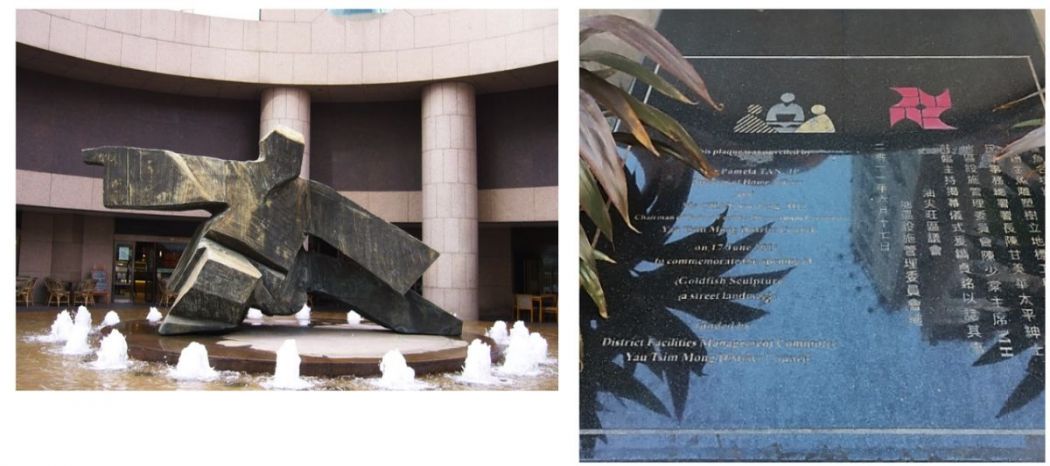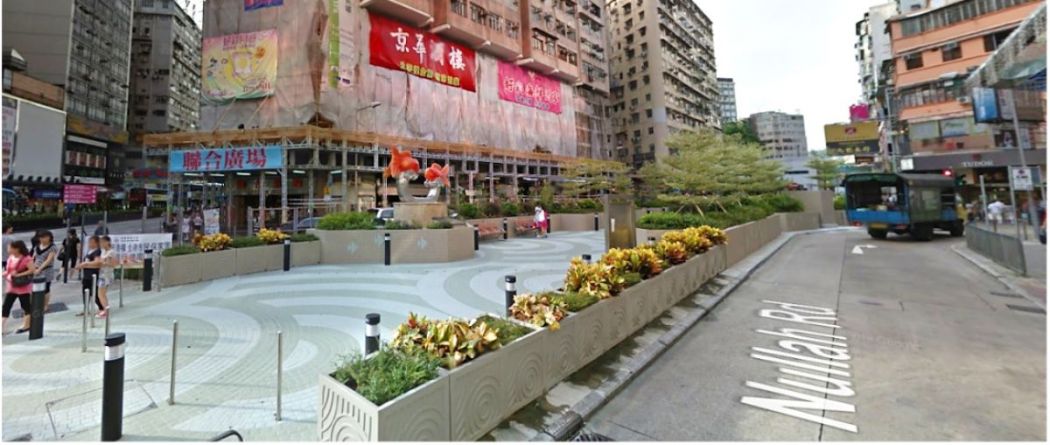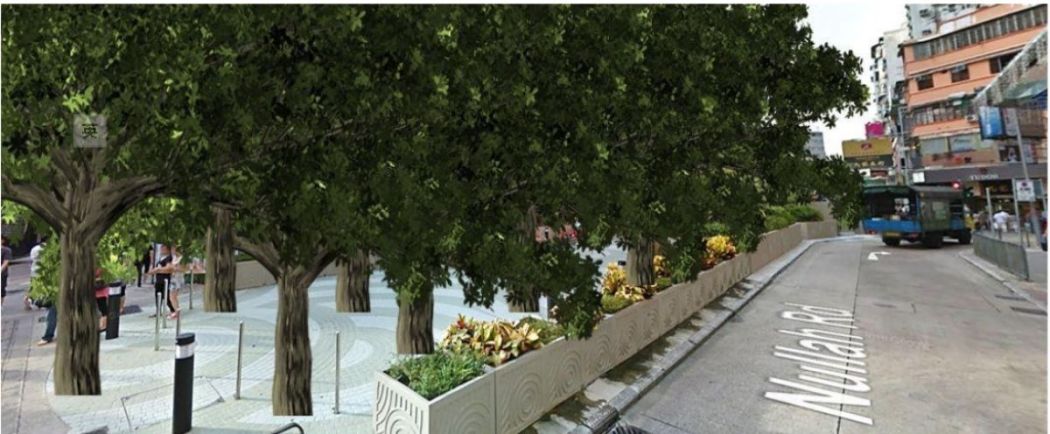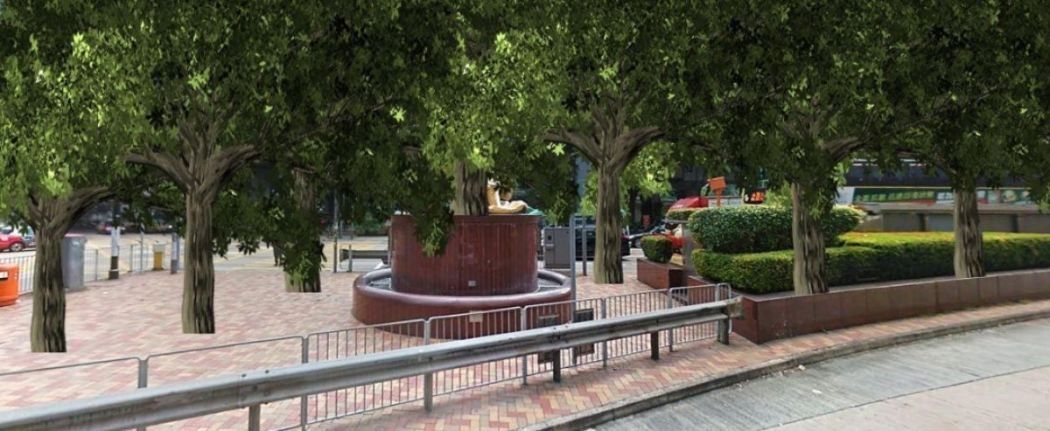By Eric Wong
The landslide loss of seats by the so-called “loyalist” district councillors in November’s District Council Elections was followed by queries over whether they have faithfully served the community over the years while in power. One of the areas most criticised by the incoming councillors, and indeed the electors at large, has been how too many white elephant monuments have been erected during their rule. These objects seemed to publicise the names of these outgoing councillors and their pals in the government whilst serving dubious, if non-existent, benefits to the district at large.

Some of the more well-known (or widely mocked) monuments are listed below.
| District | Nickname | Cost
(HK$m) | Completed | Criticism from residents |
| Wan Chai | Golden Dragon Sculpture | 3.00 | 2003 | Tacky golden skin |
| Mong Kok | Goldfish Sculpture | 0.34 | 2011 | Hard to associate the statue with the bustle of Goldfish Street |
| Shau Kei Wan | Eastern District Cultural Square | 90.00 | 2019 | Wasted space, as lacking basic facilities |
| Quarry Bay | Rain shelter Pavilion too small for shelter | 0.21 | May 2015 | Cannot block rain, blocks too much pavement space |
| Sham Tseng | Weird Roasted Goose Statue | 1.20 | 2013; demolished | Not looking goose like; no practical use |
| Kwun Tong | Music Fountain at Kwun Tong Promenade | 50.00 | TBC | Fountain takes away lawn space, preventing people from relaxing on grass |
| Kwai Fong | “Safe Island” Artwork | 0.85 | Apr 2018; demolished | Looks like grave, exterior resembles “construction waste” |
| Tuen Mun | Dome-shaped concrete blocks | 0.20 | Aug 2019; demolished | Looks like tortoise shells or tombs; questionable use |
Such ubiquity of “white elephants” may be traced to the fact that since 2008, the 18 district councils combined started receiving an annual budget of HK$300m for the purpose of “district minor works.” Come 2013, the then Chief Executive Leung Chun-ying, boosted the handout to an even more generous HK$100m for each of 18 district councils.
With many of the district councils too lazy to consult the public and too confident in their own professional judgment and town planning expertise, the temptation became irresistible to splurge on image-enhancing projects which had little bearing on improving local residents’ livelihoods and facilities.
Street corner eyesores
To take two of the busiest districts in Hong Kong as examples, otiose “vanity landmarks” come in the form of the Goldfish Sculpture in Mong Kok and the Golden Dragon Sculpture in Wan Chai. These two monstrosities not only occupy prime locations in the city’s busiest thoroughfares, they were brought to you, the taxpayer, at huge expense – both to build and to maintain. How these inutile objects may lift the spirits of the local residents is anybody’s guess.

What must puzzle most taxpayers must be the question over why these contraptions, made out of plane cement and paint would cost millions to build? Compared to the extravagant HK$3m cost to erect the gaudy Golden Dragon Sculpture, would the Tai Chi bronze sculpture in Exchange Square, which was authored by the famous Taiwanese sculptor Ming JU, be a far more pleasing and inspiring artefact? What is more, a bronze sculpture from the same Tai Chi series was sold at a 2009 auction for a mere HK$5 million. If the people of Wan Chai had the choice, would they have opted for the aggressive-looking dragon or the graceful Tai Chi master?
The self-important intention of erecting such monuments becomes clear when one looks at the inscriptions below the sculptures – the text is but an orgy of adulations and praise for those “celebrities” involved in erecting the monument.
Ivory tower administrators
With the ever-expanding concrete jungle around us, people are increasingly being alienated from nature, creating a less than ideal environment for health and mental wellness. When tree cover is progressively eliminated from urban space, even from sites sizeable enough and conducive to being covered by trees, the only possible explanation must be a bureaucratic obsession for convenience and ease of control.

Take the open space where the goldfish Sculpture is situated, a thoughtfully planned cluster of mature ficus or camphor trees will have the miraculous effect of turning the current ugly and hostile collection of concrete boxes into an urban oasis.
In terms of costs, planting mature trees roughly two storeys tall only costs HK$50,000-100,000 per tree. In other words, fully covering the 10,000 square-feet goldfish site needs just a dozen or so trees, with an estimated total bill of less than HK$2m.
The result cannot be further from the sorry situation people have to put up with every day – the island is now a bountiful area of shade where pedestrians can rest and take their minds off the dreadful high-density concrete structures bearing down on them.

Turning to Wan Chai’s Golden Dragon site next: with a site area of some 5,000 square feet, even six to seven mature trees will achieve similar greening effects as in Mong Kok above. The total cost will also half to around HK$1m, with the same significantly enhanced therapeutic effect that the ghastly golden contraption can never match.

Retake our city
The above tree-for-elephant philosophy of decorating urban open spaces may seem absolutely logical to the end-users who are the local residents. Alas, this is not the way mandarins/councillors inhabiting air-conditioned offices think. As a result, we have gotten used to being deprived of what is rightfully ours, as they opt for the easy option of concrete pouring and mechanised lazy maintenance. This is why the city is overwhelmed with white elephant constructions which have no benefit to the residents whatsoever.

From an environmental science perspective, trees provide the best possible shelter for pedestrians and public space users alike, lowering the surface temperature in a hot climate city such as Hong Kong. In fact, the ability of tree shade to mitigate the “heat island effect” is a shockingly high – not only is the shaded ground temperature several degrees lower than air temperature, the difference is even larger against concrete/bitumen road surfaces by close to a multiple.
The above sustainable and yet economic urban management strategies are so common sense that it is unimaginable that they are not widely adopted all around Hong Kong already. In contrast, what we get are the expensive, tawdry, unsightly piles of waste costing millions of our money. We surmise that the flawed design of the urban management bureaucracy may be the main cause for Hong Kong white elephant phenomenon, this is explored below.
Cowboys leading experts
We suffer from overly centralised urban planning and management – this should be a function led from the user level, not from some remote administrator – the misallocation of expert resources is also a crucial factor contributing to the current situation we find ourselves in.

For example, there are 1.7m trees that may fall under the duty and care of some 137 certified arborists employed by various government departments. However, there are vast discrepancies between the workload of these arborists: the Highways Department, which oversees 600,000 trees (the highest amongst the departments), employs only eight arborists; who would each be in charge of 80,000 trees on average. So if any of these specialists work the full 365 days a year, each still has 214 trees to check on every day.
Meanwhile, the 15 arborists at the Housing Department have a mere 18 trees per day to work on – the workload difference is a factor of 12.
| Departments | No. of trees | Arborists | No. of trees each arborist has to handle |
| Agriculture, Fisheries and Conservation Department (AFCD) | 380,000 | 28 | 1,357 |
| Drainage Services Department (DSD) | 248,000 | 1 | 24,800 |
| Highways Department (HyD) | 633,000 | 8 | 79,125 |
| Housing Department (HD) | 100,800 | 15 | 6,720 |
| Leisure and Cultural Services Department (LCSD) | 515,000 | 70 | 7,357 |
| Water Supplies Department (WSD) | 157,100 | 0 | – |
| Lands Department (LandsD) | Hard to estimate* | 13 | – |
| Architectural Services Department | 200,000 | 1 | 200,000 |
| Total | 1,668,700 | 136 | 1,364 |
| *Difficult to count due to a massive number of trees. Source: 2018 Legislative Council document |
With such a haphazard allocation of resources and responsibilities on how Hong Kong’s greenery is maintained and enhanced, it is not surprising that all we see are trees being cut down or dying (from a multitude of causes: malnutrition, diseases, to overzealous felling in the name of safety), instead of plans, actions, or debates about how the green coverage can be enlarged or enhanced.
The establishment of the Greening, Landscape and Tree Management Section could have been the opportunity to address this structural deficiency, but this initiative also ended with a whimper. The crooked infrastructure continues to turn our arborist experts from potential tree conservation champions into tools of administrative execution.
Perhaps the only way urban greening can become an effective movement is by empowering a centralised arborist function, may be under the aegis of the AFCD, and with its own budget and mandate to greenify the city. Another way to add to this momentum would be to delegate local urban planning authority to the district councils so they have the power to drive the beautification of their own districts in fashions that local residents demand, with the help of this new centralized arborist team.
White elephants will continue to appear unless we address the structural issues of urban management, and it is high time major reforms were implemented to return power to the people and their gardeners.
Eric Wong is the founder and managing director of private equity firm Bricks & Mortar Management. The author wishes to thank Mr Kelvin Wong Siu Fung of the School of Communication, Hong Kong Baptist University for assisting in drafting this article, collecting data and compiling charts.
